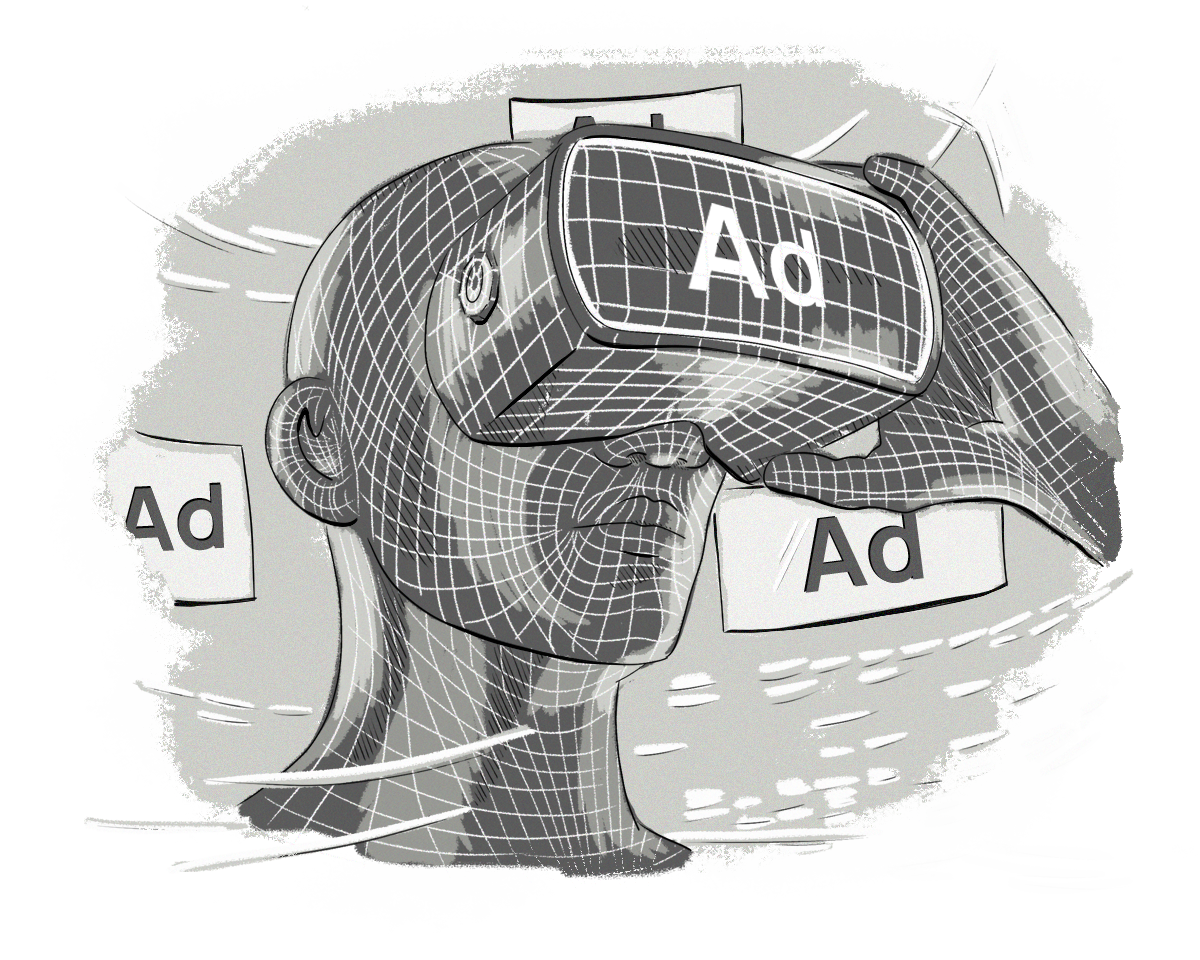There’s been a lot of talk and press about the metaverse over the past few years. The introduction of the metaverse is often compared to the invention of the Internet and represents new opportunities for companies and Internet users, so much so that Facebook even changed its name to Meta.
But what is the metaverse?
Is it simply a virtual world accessible via the Internet? Or is it something much bigger than that?
And what role can advertising and AdTech play in the metaverse?
Clearcode recently teamed up with MD X to discuss these very questions via a panel discussion, which we recorded inside MD X’s virtual world.
You can watch the full video below or read a summarized version of the discussion under the video.
Watch this video, and other AdTech & MarTech videos, on Clearcode’s YouTube channel.
The speakers on the panel are:
Michael Sweeney — Head of Marketing at Clearcode
Ksenia Stark — co-founder and COO at MD X
Alexander Aleksashev-Arno — co-founder and CEO of MD X
Irene Hafez — co-founder and CPO at MD X
Grzegorz Łukaszewicz — Head of Engineering at Clearcode
Janek Gonzalez — Head of Growth at Clearcode
Piotr Banaszczyk — CEO at Clearcode
Below is a condensed transcript of the above video.
Over the past few decades, we’ve seen many different digital advertising channels emerge. The first online ad appeared on October 27, 1994, on a website called hotwired.com (now wide.com). The advertiser that showed the ad was AT&T, one of the biggest telecom companies in the US.
In 1996, Yahoo first started showing ads on its search engine. Then, around 2016-2017 ad spend on mobile devices overtook ad spend on desktop devices for the first time.
Since then, we’ve seen the rise of various other digital advertising channels, such as digital out of home (DOOH), in-app mobile advertising, digital audio and connected TV (CTV).
Another emerging channel for publishers and advertisers is Web3 and the metaverse.
What Is the Metaverse?
Ksenia Stark: The concept of the metaverse actually goes back to last century. It was derived from the science-fiction novel Snow Crash by Neil Stephenson.
He was describing how humans become programmable avatars, how they interact with each other, that they are like software agents, and the three-dimensional virtual space. And it’s like a metaphor for the real world.
That time it was quite dreamy, but as we progress with so many technologies, we are getting there.
The novel was also really nice, mentioning that actually the hackers will be the artists of the 21st Century.
Here we talk about the freedom of data. In the past Century, it was not that free, and the hackers were the ones who were getting access to data and they were understanding the power of data, while the governments didn’t know how to control it and they didn’t know that we would even get to the point when data will become so accessible.
Basically we are right now in the Web3 space, which is also kind of a creator economy.
Think of a metaverse as an extension of our reality. It doesn’t need to be virtual reality, so it doesn’t equal VR but actually it’s a new way of how we can interact with the digital world and consume media.
Another parallel or definition that I can give is that the metaverse is a kind of semantic web3 — an extension to the reality where various technologies and concepts come together.
It’s XR (AR/VR), it’s also blockchain AI, and community aspect, or DAO (decentralized autonomous organization).
It’s basically how we try to extend the world and also make it more democratized.
Is the Metaverse Here Already? Or Is It Simply Just a Concept?
Ksenia Stark: I wish we were there, but we are not. We are still prototyping, and experimenting and at this point it is sort of a virtual world; you can call it a subverse as well. There’s no defined terminology — a lot of people call it differently.
But of course, the Metaverse will be enabling different forms of media consumption, which also requires progress on the technological level, like the 5G network and devices.
It doesn’t equal virtual reality; we should also think about overlays on the real, physical world with digitalization.
We also call it digital, so that’s a newly emerging term. Let’s move away from literally locking yourself in the VR glasses and think of the overlay of reality.
Imagine you walk on the street and you’re able to see extra information on the buildings, and products.
I don’t want to be too futuristic, but I do want to mention haptics and devices that are also progressing. In the end, we want to have the ethical implementation of technology.
We don’t want to lock anyone in some kind of imaginary world; but we do feel that the metaverse has a lot of implications in our real-life. We also can talk about math tag and simulations, but also change in the e-commerce game.
So we are not there yet as the progress needs to go further with technologies and devices, but we are moving towards it and, of course, another question is interoperability.
The metaverse is supposed to be one where we can move from one world to another in a seamless way. I think we will do that at some point.
Michael Sweeney: Just picking up on that last part about the connected worlds or the metaverse being one.
One of the main concepts of Web3 and the metaverse is this decentralized part, which you mentioned before.
Another key element of the metaverse is the interoperability between different platforms, so if every platform, whether it’s Fortnite or Roblox, if those platforms are a closed system, as I believe they are currently, then how can we build the metaverse in a way that it’s been envisioned?
Irene Hafez: My answer is standardization. For example, the Metaverse Standards Forum is assigned to help build an open metaverse. The forum has initiated a pipeline of member-driven exploratory and working groups that are meeting regularly to create charters and execute the project they define.
The group is also working on the metaversel-related standardization activities and open standards. I can draw a parallel here with the Web2 and ID standards.
The working groups, which consist of multiple industrial leaders that very often represent closed platforms, are working on the standardization for CTV advertising, for example.
In any case, I believe that the metaverse will change and transform over time. Here, of course, the appropriate standards developed by such groups will be adopted.
Michael Sweeney: Ksenia, I believe you wanted to add something?
Ksenia Stark: Yes, so as I was saying earlier about the concept of metaverse, how it originated initially from Neil Stevenson, and I said that he is present in the space. He launched the initiative for Lamina One, which is a protocol for enabling an open metaverse.
We do see that different entities are trying to see how we can connect it all together, so not only the Metaverse Standards Forum, but also more Web3 initiatives, which is beautiful.
We are moving towards a no-vendor lock in, being connected, being open and that’s what the metaverse is all about.
Tell us about Meta (formerly Facebook). What’s your opinion on the things that Meta is doing in the metaverse?
Alexander Aleksashev-Arno: It’s an important topic. I’ve been using Facebook products from the beginning — Facebook, Instagram and WhatsApp.
I’m using them and I’m growing as an influencer a bit. I like what Facebook is doing, but that was before I started to understand that they are not playing in the right way, e.g. they are not providing transparency to digital agencies.
I’m not alone in this region, who are starting to understand it is a platform economy that provides a bad experience. The culture that’s been established is so bad.
Meta underwent a rebranding (from Facebook to Meta) and it definitely was the big switch on the market.
It is a huge company and we’ve started to pay more attention to the concept of the metaverse and started to relate it. And I think this accelerated a lot of solo vision, like early builders, and this was a pretty good movement.
But in the same stage, the virtual world is meta-provided, or avatars, or graphic insights. Actually, in Webstery we are not talking about Meta, because this is kind of a joke that Meta is not allowed.
The experience that Meta provides is not what we expect. It’s not an experience that we would love to see, it is not an experience that can be produced by a company who has been driving media for a long time.
I understand that they need to be a change, and their main focus is Oculus. They are trying to build mostly headsets and devices.
Devices will be extending our reality and it will become more casual. Devices are a very important element of the future of the metaverse.
Meta has increased capacity in the production of more accessible devices.
Michael Sweeney: Just a quick follow-up point on that: you mentioned just a moment ago about Meta and that they’re not living up to the standards a lot of people expect from the metaverse. But I guess on the other hand, my understanding of what Web3 is and everything inside of it, what metaverse stands for, is decentralization where no one company owns your data. It’s putting the ownership of data back into the individual person. Is that one of the main concepts of Web3?
Alexander Aleksashev-Arno: Exactly, I completely agree. The reason why we’re not talking about Meta or even a big corporation is because they are 100% hosting their data on their platform.
Ksenia Stark: It is frustrating because centralization does lock us into a platform. If we lose access to an account, e.g. Facebook, then we can’t do much to get it back.
Alex mentioned that Meta is investing a lot into producing devices and they are putting a lot of effort into that. When Meta released their first snapshot into the metaverse, the first avatars didn’t have legs and then had a really bad quality. Our Spatial space, for example, has a higher quality.
Of course, we also understand that they have more than 3 billion users and in Spatial, for instance, we can’t have more than 50 people in one space, so there are definitely limitations. But if you’re aiming to be Meta, you also need to live up to a certain standard.
85% of users are using the desktop version and 2D version of the metaverse. But we are moving towards devices. Companies have already started thinking about the market, e.g. which device are people going to use? Let’s see where we’re heading.
Is the Metaverse Essentially Another Channel for Publishers? Or Is It Something More?
Irene Hafez: In the current stage of the metaverse’s development, I think not.
The concept of the metaverse is not new to us, and during the last two to three years, it has had strong development.
The clearest example for me is computer games.
This is a popular channel for publishers and advertisers, but still, it is a more niche channel compared to other digital channels.
Most industries have ignored the gaming culture and industry, but this is changing.
The industry is becoming mainstream and relevant to all of the others. I’m watching my son play Fortnite and understand that games are becoming social platforms that players use to interact with their friends and share experiences.
With the metaverse, transformation into one open metaverse will be a separate channel for publishers due to the complexity of the meta world and the variety of the user interactions with virtual reality.
It is also necessary to understand that there are completely different approaches in tracking systems of the user behavior and also the privacy policy content.
If a Brand Wanted to Start Advertising in the Metaverse, How Could They Go About It?
Michael Sweeney: Over the past couple of years we’ve seen brands get into the metaverse and create their own environments; examples include Wendyverse in Horizon Worlds. It appears that in this case, brands are essentially acting as publishers as well.
Could it be compared to brands building their own mobile apps and do you see these trends continuing?
Ksenia Stark: Last year we saw a bunch of brands moving and establishing their presence on Decentraland, like Heineken, Samsung, Nike, Coca-Cola, and Starbucks.
The thing is, right now it’s more of a PR activity rather than anything connected with applications. It’s rather a tool for engagement.
On one hand, it’s more like a PR tool in the sense that brands put a flag, stating they’re there and are doing something in it, but for instance, Gucci entered Roblox and created a gamified experience — the Gucci Garden. In the end, a virtual presence is great, but it needs to have utility, it needs to mean something.
What can you do in this world? If you create a space for connecting with your fans, are you adding value? Are you allowing them to purchase some items or earn points?
That can be a good way of thinking, “why would you even create that kind of experience?”
It also means building the communities for the next generations, like Gen Z, Alpha — the ones who are actually using those kinds of platforms and understand the essence of digitalization, globalization, and digital identity.
Alexander Aleksashev-Arno: At the moment we have no metaverse. As a brand, we would love to build on these experiences. We need to engage our audience with a digital world. We need to have some kind of go-to-market strategy of how to do it right.
In many ways we would love to talk about Web3 implementation. In the metaverse we have part of our NFT collection that you can buy and support communities.
Advertising in the metaverse is a new environment but there’s not a lot of audiences. We need to build communities.
Roblox has 55 million visitors per day, but 60% of them are kids. And Gucci has some stores or universities there. The kids will be growing with the platform, so they will know Gucci. And when they start to have the money they will become their customer.
Ksenia Stark: From the programmatic perspective, the audience is not there, but there are some solutions that are trying to move forward and make the experience personalized with banners or videos. That’s the only thing that’s possible at this moment. But, again, the question is targeting.
If you’re in the metaverse, there is a question of anonymity and digital identity, which is not yet formed.
I don’t think it’s ethical to take the data from the blockchain and use it for targeting.
We need to build awareness that your data is being used and if it is being used, what do you get out of it. Users need to explicitly consent as well.
Michael Sweeney: Definitely. You mentioned a fantastic point about the programmatic side of it. Part of the question is about advertising inside the metaverse, but I think that maybe one of the bigger questions is advertising inside Web3, and particularly the use of data.
Currently everyone knows how data is collected, stored and used in the current Internet (i.e. Web2), where it’s often viewed that people are the products, especially when it comes to platforms like Facebook, etc. Whereas with Web3, where it’s all decentralized, people are owners of their data, they control it, and you need to get consent. That creates a whole different set of challenges.
How programmatic advertising works currently and how it has been operated from the beginning, has very much been focused on collecting and using large amounts of data, and this data being owned by the companies that collect it, not by the actual individual.
For a very long period of time it wasn’t collected with consent. Of course that’s somewhat changed now with the introduction of privacy laws, like the GDPR. Even Apple’s AT&T asks for consent to pass on the mobile ID.
But it’s a very different concept in Web3, especially around data.
Data is obviously very important for programmatic advertising. There’s a lot of key challenges to overcome in terms of advertising inside the metaverse and Web3 — not only from the technical point of view, but also around some of the other areas, such as the use and collection and ownership of data as well.
Ksenia Stark: We need to reinvent advertising. It shouldn’t be as it is right now. We see a lot of pushy campaigns, fraud, middlemen… It’s a big problem in AdTech. Of course, we will come to the point where we will know how we can do it better and how we can make the implementation ethical.
What Role Can Advertising Play in the Metaverse?
Janek Gonzalez: Because it’s another channel, it can be treated the same way as other digital channels. For example, we could use advertising in the metaverse to either build brand awareness or even drive conversions.
At the same time it gives us possibilities to bridge worlds between Web1, Web2 and Web3 and also target new audiences, and younger generations, as Ksenia mentioned, like Gen Z or Alpha which are more tech-savvy.
What Challenges Do Brands, Publishers and AdTech Companies Face When Entering the Metaverse?
Piotr Banaszczyk: I think that there are two main challenges that we need to be aware of. One would be mental, the second one would be technical.
There’s a level of skepticism for brands to participate in creating this new channel and this is something that we need to overcome.
We need to somehow build the audiences, make people keen to join and to participate in those environments.
The second challenge will be rather technical: how can we connect the existing part of the programmatic ecosystem into this virtual world?
Something similar is already happening with in-game ads. It is proving that in virtual environments there is a way to connect. Although it needs to be adapted into the metaverse standards. After that, probably there will also be some kind of the IAB standardization and everything that needs to happen before a new standard is created.
So, to summarize: the mental challenge is to convince people and the technical challenge is to come up with unified standards that will allow everyone to connect and join in a simple understandable way.
Michael Sweeney: I definitely agree with the level of skepticism within programming advertising about the applications of advertising and AdTech in the metaverse. There certainly is a long way to go.
How Could AdTech Plug Into the Metaverse?
Grzegorz Łukaszewicz: In terms of adding AdTech into the metaverse it’s a technical issue. It is not standardized yet and needs to be figured out.
I would assume that it will happen soon due to the popularity of the metaverse. Also, as long as we will have access to the outside world, i.e. communicating with the AdTech platforms via API, that shouldn’t be a problem.
It’s a matter of establishing some ground rules of communicating between the metaverse and AdTech platforms.
However, I would start thinking about what’s next after we communicate with AdTech platforms.
For example, let’s take a creative. In the 3D space, the creative needs to be very flexible. If we put an ad on the building, the ad will be massive when we are close to the building, which implies it needs to have a very high resolution to be seen by the people within the metaverse. But if you are far away, the creative will be very small. Scaling the size of the creative up and down is one of the issues.
Assuming that we will be walking around virtual cities, we need to think about how this will influence the experience in the metaverse performance-wise if we start rendering all those ads with the maximum resolution.
So, this kind of problem needs to be solved.
The question is: when and where should it be solved? Should it be an AdTech platform that will deliver a specific creative at the specific time in the specific resolution, for example, or is it the metaverse that should resolve those kinds of issues? We don’t know yet.
Another problem that needs to be solved is providing support for those kinds of creatives, for those kinds of demands from the demand side.
We faced a similar problem in one of our previous projects where we developed an AdTech platform for the VR environment. The ecosystem isn’t ready for those ads yet.
Creatives are very specific for this use case. There are no demand platforms, like DSPs or ad servers, that are able to provide us with such a flexibility when it comes to the creatives.
Ksenia Stark: The Metaverse is challenging. The problem of such spaces is rendering, especially when it comes to programmatic and real-time processing. For instance, this penthouse has heavy graphics. It has to be all loaded to your device and it’s also an NFT. It’s hard to imagine how we can have thousands of people in this space.
It’s definitely not possible. And definitely AdTech is not on the side of hosting the necessary creatives.
Firstly, we are moving towards more immersive formats and 3D will dominate this space. At MDX we put more effort into researching and delivering monetization and standards for 3D objects.
And another thing we should not forget about are distributed systems.
Decentralization and distribution are different concepts. The way 3D objects are assembled in the space can be different.
Not everything has to be loaded; it can be assembled from various businesses. Solutions are emerging that will enable it. There’s definitely progress on the tech side, not only on programmatic but also the builders of the virtual spaces. I think we will soon see some progress on that matter.








